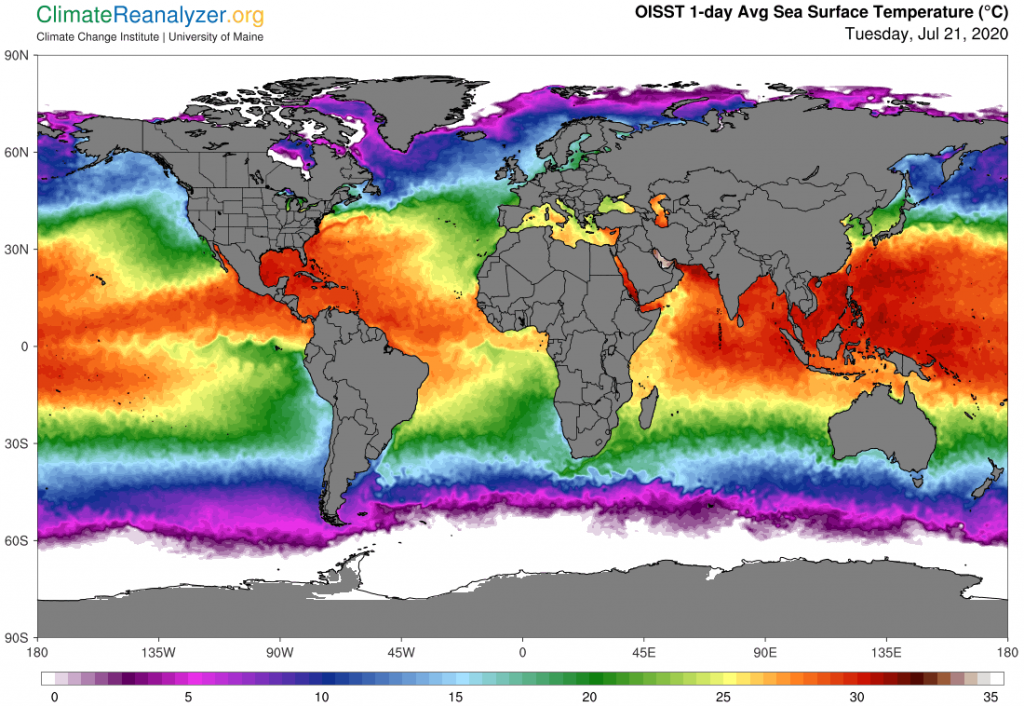Pursuant to the analysis covered yesterday, I think this is a good time to revisit the animated version of precipitable water readings published by the University of Wisconsin. (Please spend a few minutes studying all the different varieties of activity on display before reading on:) http://tropic.ssec.wisc.edu/real-time/mtpw2/product.php. The one thing that should really stand out is how everything is constantly in motion, the rate of which can only be characterized as ‘lively’. Another thing that grabs attention is the fact that precipitable water is not the least bit evenly diffused, unlike the state of all those “well-mixed” atmospheric gases having lifetimes so much longer than water vapor. Everywhere you look there is a different total amount, in some cases extremely so, and almost everywhere you look any existing amount is constantly subject to change. Any science related to precipitable water must therefore treat it strictly in accord with dynamic principles. Any static concepts that are offered should be questioned.
The highest volumes of precipitable water regularly show up near the equator, which makes sense for a short-life substance because that is where the warmest waters can be found, enabling maximum evaporation. For the same reason it looks like about two or three times as much production originates from the waters of the Indian Ocean and western Pacific than any other region. A quick look at this map offers plenty of evidence for this being the case, which also happens to be true all year long:

Now go back and study the direction of movement of the bulk of all the precipitable water after being produced. Near the equator about as much moves to the west as to the east, while relatively little of this heaviest bulk moves either to the north or to the south. Away from the equator, where the bulk is much lower, there is more pronounced movement from west to east plus a much greater tendency to move either north or south, depending on the hemisphere. This distinct difference in the direction of movement pattern lends credence to the idea that newly evaporated vapor is being carried off by two distinctly different and well-known classes of winds. Most of it must be picked up and held by winds close to the surface, the pattern of which is mainly determined by the mix of high and low air pressure zones at the surface level. The smaller fraction, farther from the central area, apparently ends up under the control of winds of a type known to exist only at higher altitudes in the atmosphere, where they are governed by an air pressure configuration with a significantly different pattern and effect. These winds always have a strong tendency to move from west to east, in both hemispheres, and are sensitive to Coriolis effects that tend to pull them toward the poles.
But this second category of water vapor first had to be transported from the surface up several miles to where these other winds are located, and they would need to do so in continuous streams without experiencing delays that could get vapor molecules all packed together as raindrops. The mechanism is available and understood, occurring in many qualified locations strung out in a linear way along either side of the main evaporation zone. The locations seem to be similarly productive no matter where they are found along either line, and also roughly equivalent on both the south side and the north. Once launched, however, the vapors generated on the south side clearly have more of a struggle progressing poleward than those in the north. Finally, over any five-day period a vast majority of the planet’s surface will be overpassed by at least a small amount of this type of vapor product, thus becoming subject to any of several possible effects. There are a handful of exceptions to look for, in particular the Nazca plains on the coast of Peru, which seldom gets even a drop of rain.
Carl